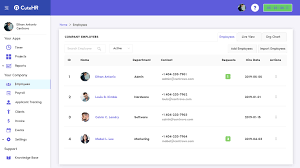IRS Tax Debt Relief Program: Settle Your Tax Debt Fast & Legally Today

If you owe back taxes, navigating the IRS Tax Debt Relief Program can help you resolve your tax burden, protect your assets, and regain financial control. This guide walks you through IRS-approved relief options—from simplified payment plans to the powerful Offer in Compromise—and practical steps on eligibility, application process, and common mistakes to avoid.
What Is the IRS Tax Debt Relief Program?
The IRS Tax Debt Relief Program refers to a suite of federal options designed to assist taxpayers who owe unpaid federal taxes. It includes solutions like:
-
Offer in Compromise (OIC) — settle debt for less than owed
-
Installment Agreements — pay over time
-
Currently Not Collectible (CNC) status — temporarily pause collections
-
Penalty & Interest Relief
-
Low‑Income assistance and special waivers under the Fresh Start Program
Each path under the IRS Tax Debt Relief Program is tailored to different financial circumstances and eligibility criteria.
Why Use the IRS Tax Debt Relief Program?
-
Legitimate relief without scams — Unlike shady third-party services, these are official IRS options available at minimal or no cost.
-
Financial hardship accommodations — The IRS considers income, expenses, and assets when applying programs like the OIC to reduce debt burden .
-
Flexible payment options — Installment agreements allow manageable monthly payments and pause collection actions during approval.
-
Penalty relief — Qualified individuals may receive penalty abatement or scheduling relief.
Key Relief Options in the IRS Tax Debt Relief Program
1. Offer in Compromise (OIC)
The Offer in Compromise, a key feature of the IRS Tax Debt Relief Program, allows eligible taxpayers to settle for a reduced amount based on their ability to pay. OIC is designed for:
-
Those who cannot pay their full liability (doubt as to collectibility)
-
Those who face undue hardship (effective tax administration)
-
Occasionally, disputes over the liability itself (doubt as to liability).
Eligibility & Process
-
File all required tax returns and estimated payments
-
Submit OIC using Form 656 and supporting financial statements Form 433‑A (individual) or 433‑B (business)
-
Include the non-refundable $205 fee (waived for low-income applicants) and required payment (20% lump sum or monthly first payment) .
The IRS uses strict formulas to calculate the minimal settlements—considering disposable income and asset equity before agreeing to the offer IRS. Approval rates remain low—around 21% in 2024 .
Timeline & Considerations
Once submitted, the IRS review takes 8–10 months or up to two years in complex cases. Collection actions pause during review. If rejected, you can appeal or explore other relief options Investopedia.
2. Installment Agreements
The IRS Tax Debt Relief Program includes various installment plans:
-
Streamlined Installment Agreement (SLIA) — for debts up to $50,000 with minimal paperwork
-
Guaranteed Installment Agreement — for debts under $10,000, paid in 3 years or less
-
Non‑Streamlined Installment Agreement (NSIA) — for debts up to $250,000, new option making agreements simpler for larger balances, though IRS files a lien.
Installment plans allow monthly payments, stopping liens or levies during setup. Interest and penalty charges continue until paid off. Setup fees range up to $225, or may be waived for low-income individuals.
3. Currently Not Collectible (CNC) — Financial Hardship Program
Under the IRS Tax Debt Relief Program, taxpayers unable to pay after necessary expenses qualify for Currently Not Collectible status. This program temporarily halts IRS collection efforts such as garnishments or levies. However, penalties and interest keep accruing . CNC status may get periodically reviewed—requiring documentation of ongoing hardship.
4. Penalty Relief & Fresh Start Initiative
As part of the broader IRS Tax Debt Relief Program, the IRS offers:
-
Penalty abatement for first-time violations or reasonable cause
-
Fresh Start Program, which expanded installment thresholds and reduced lien filing thresholds from $5,000 to $10,000, and made OIC and installment setup more accessible.
Taxpayers may qualify for waivers if they acted in good faith but encountered circumstances beyond their control—such as illness, unemployment, or natural disasters.
5. Low‑Income Assistance Tools
The IRS provides free support via its Volunteer Income Tax Assistance (VITA) program and Low Income Taxpayer Clinics. These can help with tax preparation and navigating relief programs under the IRS Tax Debt Relief Program at no cost
Step-by-Step: Navigating the IRS Tax Debt Relief Program
| Step | Action |
|---|---|
| 1 | Gather tax returns, balances, notices, and a breakdown of current financial status |
| 2 | Identify your ideal relief option: OIC, installment plan, CNC, or penalty relief |
| 3 | Use IRS tools like the OIC Pre‑Qualifier within your Individual Online Account to check eligibility |
| 4 | Submit required forms: OIC (Form 656 + 433-A/433-B), Installment (9465 or equivalent) |
| 5 | Include payment or documentation (app fee, initial payment) |
| 6 | Monitor IRS response—collections are paused during OIC review or initial installment agreement processing |
| 7 | Appeal if denied, or reapply under alternate IRS relief programs if eligible |
Common Mistakes to Avoid in the IRS Tax Debt Relief Program
-
Using unverified “tax relief” services that overcharge or misrepresent encouragement—the IRS offers most relief options directly and for minimal cost.
-
Failing to file missing returns, which disqualifies applicants from relief options like OIC or installment agreements.
-
Underestimating disposable income calculations: IRS applies national expense standards—not necessarily your personal spending—so accurate documentation is critical on subsidy forms.
-
Ignoring penalties and interest that still accrue in relief programs—all outstanding balances continue to grow until fully settled.
-
Missing compliance windows OIC applicants must stay current on future filings for five years post-acceptance or risk default IRS.
Qualifying Cases: Who Benefits from the IRS Tax Debt Relief Program?
Ideal candidates include:
-
Low-income individuals with limited assets
-
Those experiencing hardship: illness, job loss, divorce, or natural disaster
-
People with debts between $50K and $250K, now eligible for NSIA
-
Taxpayers wanting to avoid liens or garnishments
-
Good-faith filers who missed a deadline due to reasonable cause, potentially eligible for penalty relief or CNC
Timeline Expectations: How Long Relief Takes
-
Offer in Compromise: 8–10 months average, possibly up to two years for complex submissions.
-
Installment Agreement (Streamlined or Non‑Streamlined): Days to weeks for approval; longer if manual review is needed.
-
CNC status determination can take a few weeks once documentation is approved.
-
Penalty abatement or relief reviews vary but may take several months depending on volume and requests.
FAQs: Clearing Misconceptions About the IRS Tax Debt Relief Program
Q: Will applying for OIC stop IRS collection actions?
A: Yes—collections are suspended while the IRS reviews your offer application.
Q: Can I qualify for the OIC program if I own a home or retirement account?
A: Possibly—but IRS calculates equity in assets with a discount; significant equity may reduce approval chances.
Q: Can I still file for OIC if I owe over $250K?
A: Yes, but you’ll need to disclose full financials and go through revenue officer review, often under the Partial Payment or standard OIC rules.
Q: Are there fees to apply?
A: OIC carries a $205 fee (waivable if low-income), installment agreements have setup fees (some waivable). Low-income individuals often receive fully waived fees.
Q: What happens after approval or denial?
A: Approval means following payment terms strictly for five years. If denied, there’s a 30-day window to appeal or explore other relief methods .
Key Benefits of Using the IRS Tax Debt Relief Program
-
Save thousands by settling for less than total debt via OIC
-
Avoid wage garnishment, bank levies, and liens
-
Spread payments over time under reasonable terms
-
Receive penalty waivers and interest relief where justified
-
Access IRS tools and resources free of charge without third-party fees
Final Thoughts: Take Action with the IRS Tax Debt Relief Program
If you’re burdened by tax debt, the IRS Tax Debt Relief Program offers legal, structured, and often low-cost solutions. Whether you choose an Offer in Compromise, installment plan, or hardship status, the IRS provides official channels to regain stability. Visit IRS.gov, use online tools like the Offer in Compromise Pre-Qualifier, and consult free resources like VITA, Low‑Income Clinics, or qualified tax professionals to guide your application.
Don’t wait—tax debt grows daily in penalties and interest. Take charge today by applying for relief options under the IRS Tax Debt Relief Program, secure your financial future, and resolve your IRS liabilities for good.




